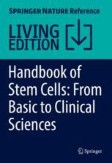Search
Search Results
-
What is the impact of human umbilical cord mesenchymal stem cell transplantation on clinical treatment?
BackgroundHuman umbilical cord mesenchymal stem cells (HUC-MSCs) present in the umbilical cord tissue are self-renewing and multipotent. They can...

-
Mitochondrial surface coating with artificial lipid membrane improves the transfer efficacy
Extracellular mitochondria are present and act as non-cell-autonomous signals to support energetic homeostasis. While mitochondria allograft is a...

-
MiRNA-125a-5p attenuates blood–spinal cord barrier permeability under hypoxia in vitro
Disruption of the blood–spinal cord barrier (BSCB) results in secondary injury and apoptosis of neurons, leading to permanent neurological...

-
Preclinical study of human umbilical cord mesenchymal stem cell sheets for the recovery of ischemic heart tissue
BackgroundHuman umbilical cord mesenchymal stem cells (hUC-MSCs) have been widely used due to their multipotency, a broad range of sources, painless...

-
An Insight into the Approach Taken to Appurtenances Disorders Linked to Mitochondria
AbstractMitochondria are essential components of bioenergetic and biosynthetic pathways and are capable of making quick adjustments to accommodate...

-
Role of PTEN-less in cardiac injury, hypertrophy and regeneration
Cardiovascular diseases are the leading cause of death worldwide. Cardiomyocytes are capable of coordinated contractions, which are mainly...

-
Stem Cell Therapy After Neurological Injuries
Axonal degeneration, inflammation, neuronal death, and cytoarchitectural distortion can result from neurological injuries in both the central and...
-
Coding and long non-coding gene expression changes in the CNS traumatic injuries
Traumatic brain injury (TBI) and spinal cord injury (SCI) are two main central nervous system (CNS) traumas, caused by external physical insults....

-
Salidroside-pretreated mesenchymal stem cells contribute to neuroprotection in cerebral ischemic injury in vitro and in vivo
Mesenchymal stem cells (MSCs) are considered a promising tool for treating cerebral ischemic injury. However, their poor survival after...

-
Small extracellular vesicles derived from microRNA-22-3p-overexpressing mesenchymal stem cells protect retinal ganglion cells by regulating MAPK pathway
Glaucoma is the leading cause of irreversible blindness and is characterized by progressive retinal ganglion cell (RGC) loss and retinal nerve fiber...

-
The Role of Post-Translational Protein Acetylation and Deacetylation in the Apoptosis of Neurons of the Peripheral Nervous System
Abstract —Neurotrauma is among the main causes of human disability and mortality. However, the mechanisms that mediate the survival and death of cells...

-
Effect of prior exposure to enriched environment on cellular apoptosis after experimental stroke
BackgroundGrowing evidence, including our previous studies, has demonstrated that an enriched environment (EE) after cerebral ischemia/reperfusion...

-
Bone marrow derived mesenchymal stem cells pretreated with erythropoietin accelerate the repair of acute kidney injury
BackgroundMesenchymal stem cells (MSCs) represent a promising treatment option for acute kidney injury (AKI). The main drawbacks of MSCs therapy,...

-
Chlorogenic acid regulates the expression of protein phosphatase 2A subunit B in the cerebral cortex of a rat stroke model and glutamate-exposed neurons
BackgroundIschemic stroke is a serious neurological disorder caused by blockages in cerebral artery. Protein phosphatase 2A (PP2A) is a phosphatase...

-
The effects of Ginsenosides on PI3K/AKT signaling pathway
Ginsenosides belong to a group of steroid glycosides that are extracted from the plant genus Panax (ginseng). This plant has been used for a long...

-
Activating Parkin-dependent mitophagy alleviates oxidative stress, apoptosis, and promotes random-pattern skin flaps survival
The random-pattern skin flap is a crucial technique in reconstructive surgery and flap necrosis caused by ischemia/reperfusion injury is a major...

-
Role of NLRP3 inflammasome in central nervous system diseases
The central nervous system (CNS) is the most delicate system in human body, with the most complex structure and function. It is vulnerable to trauma,...

-
The COP9 signalosome reduces neuroinflammation and attenuates ischemic neuronal stress in organotypic brain slice culture model
The constitutive photomorphogenesis 9 (COP9) signalosome (CSN) is a deNEDDylase controlling ubiquitination activity of cullin-RING-E3 ligases (CRLs)...

-
Focal ischemic stroke modifies microglia-derived exosomal miRNAs: potential role of mir-212-5p in neuronal protection and functional recovery
BackgroundIschemic stroke is a severe type of stroke with high disability and mortality rates. In recent years, microglial exosome-derived miRNAs...

-
Ferroptosis contributes to multiple sclerosis and its pharmacological targeting suppresses experimental disease progression
Multiple sclerosis (MS) is a chronic autoimmune disorder characterized by central nervous (CNS) demyelination resulting in axonal injury and...

